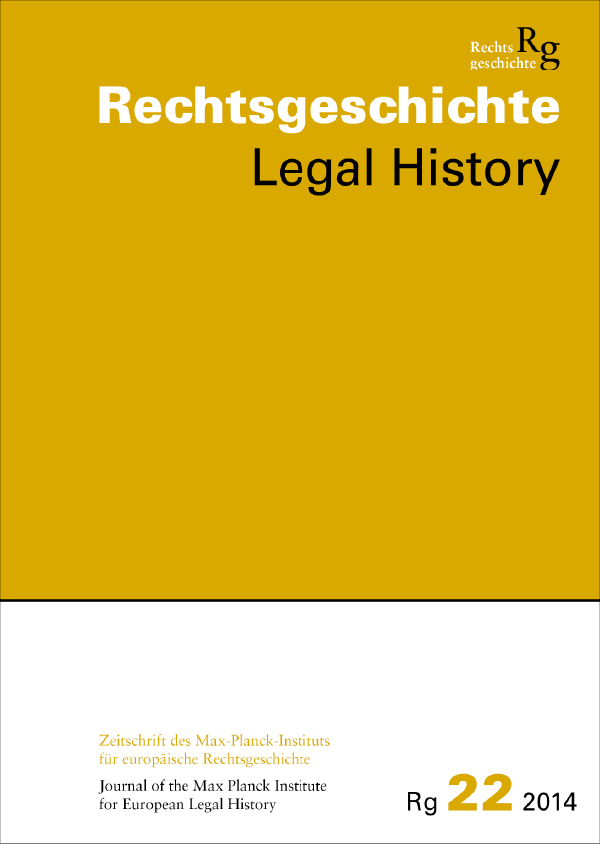Aspects of the transfer of the Saxon-Magdeburg Law to Central and Eastern Europe
DOI:
https://doi.org/10.12946/rg22/079-089Abstract
An important impetus for the development and dissemination of the Saxon Mirror, the most famous and influential German law book of Central Germany between 1220 and 1235 by one Eike von Repgow, was the municipal law of the town of Magdeburg, the so called Magdeburg Law. It is one of the most important German town laws of the Middle Ages. In conjunction with the Saxon Mirror with which it was closely interconnected, the Magdeburg Law reached the territories of Silesia, Poland, the lands belonging to the Teutonic Order, the Baltic countries (especially Lithuania), Ukraine, Bohemia, Moravia, Slovakia and Hungary. The peculiar symbiosis between Saxon Mirror and Magdeburg Law on the way to Eastern Europe has been expressed in the source texts (ius Teutonicum, ius Maideburgense and ius Saxonum in the early originally carried the same content). Ius Maideburgense (Magdeburg Law) has reached the foremost position as a broad term, which encompassed the Saxon territorial law as well as the Magdeburg town law, and, quite frequently, also the German Law (ius Teutonicum) in general. Modern scholarship recognizes this terminological overlapping and interrelatedness through the notion of Saxon-Magdeburg Law. In a very complex process of legal transfer, the Saxon-Magdeburg Law became a fundamental source of the legal systems in several Eastern European states during the late Middle Ages and the early modern period. In this sense the Saxon-Magdeburg Law contributed to the groundwork of the development of law in Europe. Milestones achieved in the process included the formal concession of Magdeburg Law to the capitals Krakow (Poland), Kiev (Ukraine), Minsk (Belarus), Vilnius (Lithuania) and other towns by kings and princes between the 13th and 15th centuries.
Downloads
Veröffentlicht
Zitationsvorschlag
Ausgabe
Rubrik
Lizenz
Copyright (c) 2014 Autor/in

Dieses Werk steht unter einer Creative Commons Namensnennung - Nicht-kommerziell - Keine Bearbeitung 3.0 International -Lizenz.





